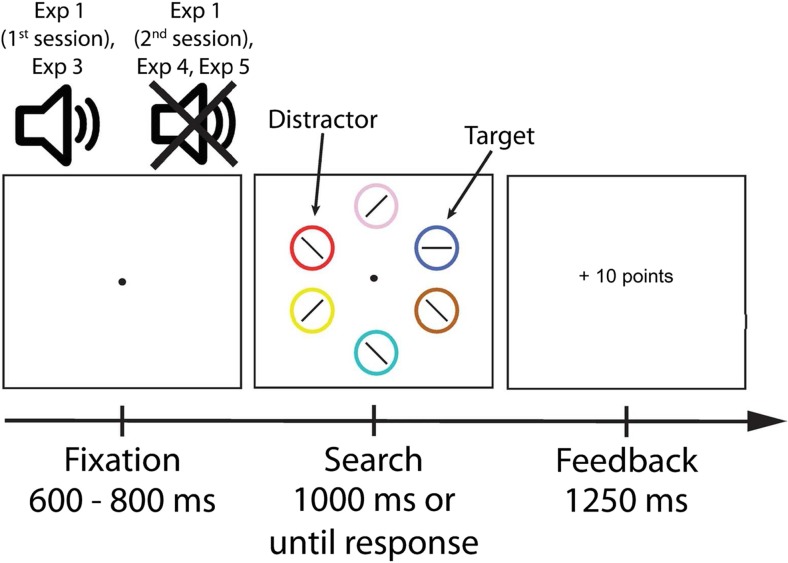Fig. 1.
Trial sequence of Experiments 1, 3, 4, and 5. Participants were instructed to search for a particularly colored (e.g., blue) target circle and report the orientation of a line segment within the target. During the first session of Experiment 1, participants were informed that one of two different tones presented before the search display signaled whether high or low reward could be earned for a correct and quick response in that particular trial. These tones were omitted during the second session. During both sessions, the appearance of a particularly colored distractor circle (e.g., red) signaled that a high reward could be earned, whereas the appearance of a differently colored circle (e.g., green) signaled a low reward. Crucially, only during the second session were participants informed about the color-reward relationship. For Experiment 3, the sequence was similar to the first session of Experiment 1 with the exception that participants were now told about both stimuli (tone and colored circle) signaling reward. For Experiment 4, the sequence was also similar to the second session of Experiment 1, except that the relationship between the particularly colored distractor circles and the reward magnitude (high or low) was swapped every block. For Experiment 5, the sequence was also similar to the second session of Experiment 1, except that participants received no information about the color-reward relationship. Note that the ISI of 250 ms between the search display and feedback is not shown

